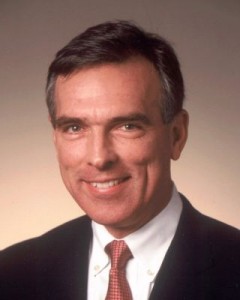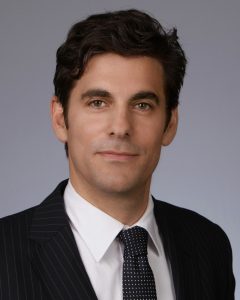
Benjamin Hartford discusses his coverage of freight transports. Mr. Hartford is cautious on the space and has been for some time. He is currently biased toward asset-based exposure in the sector. He says the second era of logistics is something to keep an eye on, as there will be continued development in IT to solve transportation inefficiencies.
Full interview HERE.

Kevin Sterling covers airfreight and logistics and maritime stocks. Mr. Sterling says a key theme impacting his transportation coverage is the slow-growth economy, both domestic and internationally. However, he says his coverage can still grow earnings even in a sluggish economy as they are able to maintain margins. The secular themes Mr. Sterling points out are excess capacity and the growth of e-commerce.
Full interview HERE.
Medical devices investors have been paying attention to volume and pricing, which have been down but have also been stable. Volumes improved somewhat by about 100 basis point over the last year in developed markets, including the U.S. Domestically, analysts say the Affordable Care Act has increased access to health care for a group of patients, which has helped companies on the volume side. Lower unemployment levels have also provided a positive tailwind, analysts say. There has been a modest inflection in growth for medical devices, analysts say.
Medical devices providers have been proving hospitals and care providers that their solutions offer both clinical and economic value, making it an easier sell for buyers for the hospitals. Some of the last growth drivers in 2010 and 2011 were stents and cardiac-rhythm management, but now the major trend being monitored is consolidation, analysts say. The trend is for companies to get bigger and broader, and to offer more value to customers.
Full report available HERE.
Transportation and logistics companies have generally been perceived a cyclical stocks—even early cyclical—by investors, and in general investors have gone from being bullish in the industry as a whole in the last three years to now being fairly bearish on the industry. Freight transportation and passenger transportation stocks have been underperforming the broader indices, as investors have been concerned about negative year-over-year volume comparisons at the railroads and a softening of the tightness of the supply/demand balance in truckload and less than truckload.
The underlying domestic economy has been slow-growing, at about 2% per year, and the strong dollar has hurt some companies that would have relied on transportation services. Some analysts are even cautious on the space, saying the cyclical nature of freight transportation is sensitive to the current slow-growth rates globally and domestically, which have been decelerating. Some analysts, however, say that even if the economy is growing slowly at home and internationally, logistics companies still have the capacity to grow earnings in a sluggish economy as transportation providers cut rates.
But not all analysts agree, some saying that asset-based segments are expected to perform better than asset-light parts of the industry, even saying the cyclical nature of asset-based segments can prove positive, especially as they have exposure to consolidation opportunities, especially on the truckload side. Some analysts, however, think the sector as a whole is risky, saying that even though investor sentiment is low, it still doesn’t account for some of the risks in the sector.
Dividing the industry in type of transportation, some analysts think railroads have been doing strong for the past 10 to 15 years, but things have now become much more more uncertain, and it’s this uncertainty about pricing power that is hurting the segment. When it comes to airlines, some analysts are concerned they have added too much capacity. Tank barge as an industry is shrinking, which should help companies involved in this type of transportation thanks to legislation such as the Jones Act. Driver shortage is still severe for truckers, and some say maybe driverless trucks could be a solution for the distant future. E-commerce is growing, which analysts think could help parcel and other companies tied to e-commerce.
Full report available HERE.

John Larkin says the overall sentiment regarding the transports has gone from fairly bullish last year to fairly universally bearish presently. He says the reasons behind the sentiment involve the slow-growth economy and the stronger dollar, which has put a damper on what was a favorable export trend. Mr. Larkin says transportation stocks are out of favor at the moment, which is often the best time to buy them.
Full interview HERE.

Gregory Lewis discusses his coverage of oilfield services and maritime transportation. Mr. Lewis is bullish on the crude and product tanker markets, and recently upgraded the LNG sector. He remains very cautious on dry bulk container shipping. He says that with the shale revolution in North America, the LNG sector is garnering a lot more attention from investors, and on the valuation front, the tanker market is offering good value.
Full interview HERE.
Matthew Mishan covers medical products and life science tools. Mr. Mishan is seeing a modest inflection in growth particularly on the U.S. side for medical devices. He says strength on the medical device side should continue into 2016 and 2017. He says companies are showing that their products have clinical and economic value, which is making it a much easier sell for the hospitals. He talks about specific companies he likes and why.

Taiwan Semiconductor Mfg. Co. Ltd.
Jeffrey Erickson, Head of Investment Strategies at Abbot Downing, expects Taiwan Semiconductor Mfg. Co. Ltd.’s (ADR) (NYSE:TSM) sales growth to continue to be between 8% to 10% per year.
[Taiwan Semiconductor] would be the world industry leader in the dedicated foundry business. They are almost five times larger than the number-two competitor and larger than the next 10 competitors combined.
It’s an industry where it’s capital-intensive and technology-intensive, and what they’ve been very good at over many years is to be first to the market. So they capture the initial orders, and in this industry, as you ramp up volume, you drive down the unit cost. So if you’re first to market, that’s important because you’re getting that initial volume, and you’re driving down your unit cost of the semiconductors.
So they’ve been able to be the cost leader over time, and as a result, that’s been able to fuel their growth. So this is a case where they’ve been able to enjoy sales growth of 8% to 10% per year. We think that that’s going to continue. We don’t really expect a lot of improvement in margin because their margins are already very good, and they really manage the business so that as they drive cost down, they’re passing that along to their customers and improving their competitive position.
So we’re looking for 8% to 10% earnings growth over time in a company with a p/e rate right now of 12 times next years’ earnings, so relatively attractive earnings, strong CFROI. They’ve been very good managers of the cash that they generate, it’s got a nice dividend yield of 3.8%, and while the semi industry is cyclical, they’ve done a very good job of managing through the cycles over time.

President and CIO Christopher Tsai of Tsai Capital Corporation says McKesson Corporation (NYSE:MCK) stock is down from a high of $240, but the company’s scale and competitive advantage are what keeps him interested from an investment standpoint.
McKesson is based in San Francisco. It’s been headed by John Hammergren since 2001. McKesson is the largest wholesaler of prescription drugs by revenue. The company is also the second-largest specialty pharmaceutical distributor in the United States. It’s about a $41 billion market cap. The stock sells for about $178 a share, and it’s down from a high of about $240. So that’s interesting to us.
So why is it down? It’s down largely because the market is concerned that payers will continue to curb the growth of drug spending, and there will be less of a tailwind from the generic side. But we think that the company’s enormous scale provides significant bargaining power and that these concerns are already reflected in the stock price. The stock is selling for about 12.7 times forward earnings. And this multiple is about 7% below its historical average for a business that continues to grow very well.
McKesson certainly has the kind of competitive advantage that we look for. It should continue to grow EPS at a low-double-digit rate and continue to produce high rates of return on equity and capital. And also, I’d like to note that McKesson produces strong free cash flow, which can be used for a larger share repurchase program or for acquisitions, both of which we have not included in our assumptions and in our EPS estimates, which call for about $14 in earnings per share over the next 12 months.
Managing Director Brooke de Boutray of Zevenbergen Capital Investments says Netflix, Inc. (NASDAQ:NFLX) is expanding on its success internationally, leveraging its content investments into 130 new countries.
You may be familiar with some of their widely watched shows such as “Orange Is the New Black” or “House of Cards.” These are shows that are popular not only with U.S. subscribers but also internationally. And in January, they announced expansion into 130 new countries, essentially everywhere but China. A very large growth opportunity indeed.
Ms. de Boutray adds that while Netflix is experiencing a more competitive environment with services like Amazon Prime, it has been able to leverage costs over a growing subscriber base.
They’re definitely experiencing a more competitive environment when it comes to buying content because one of the other large buyers is Amazon. Amazon Prime Instant Video is part of Prime service. And it’s a way to add value to that $99 subscription, and Prime has become a significant revenue driver for the company. But so far, Netflix has been very successful in acquiring a large, quality library of entertainment, as well as producing original content. Content costs have risen; however, Netflix can leverage those costs over a much larger subscriber base. No one matches Netflix’s scale.